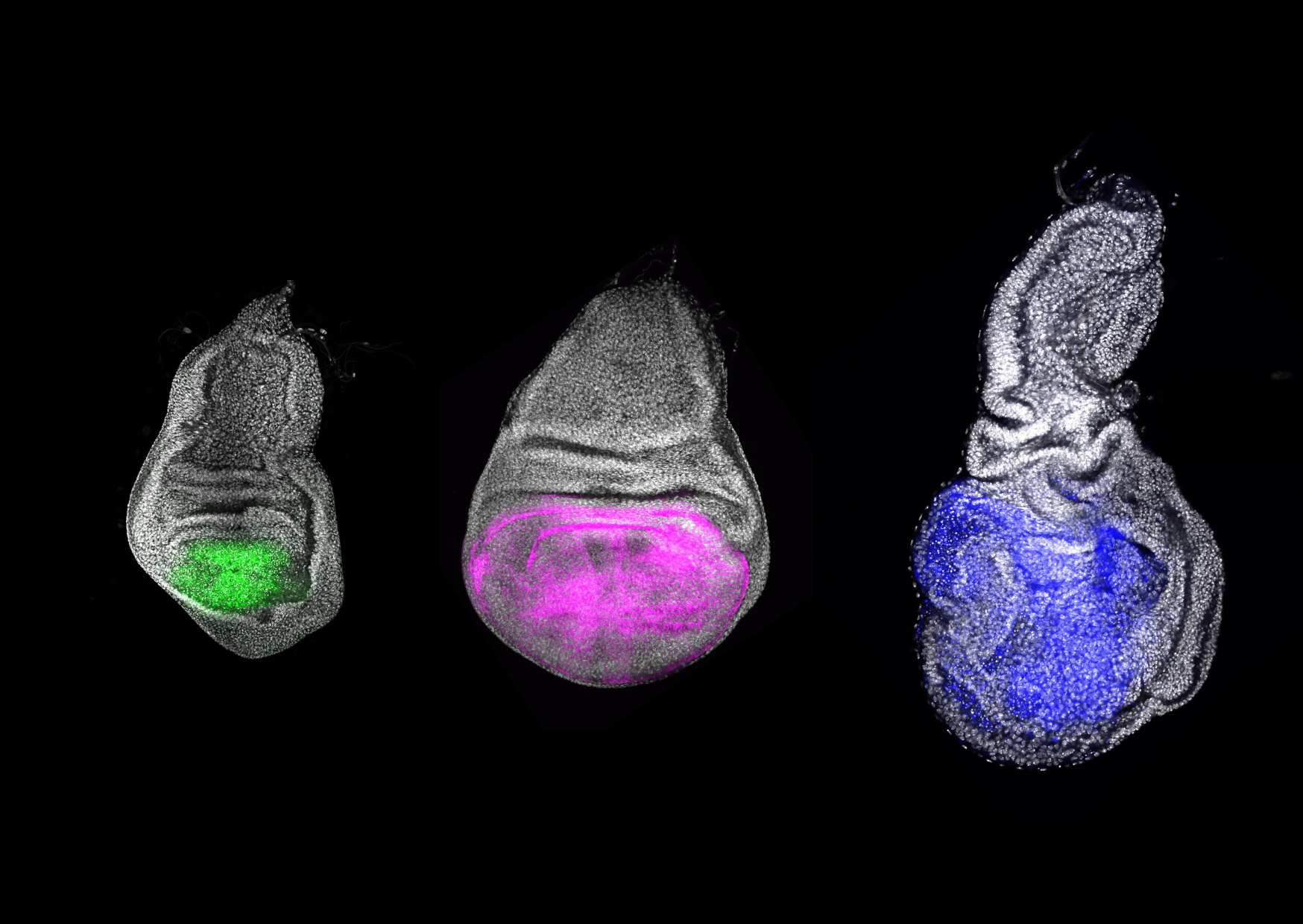Chinmo, "the youth gene"
Uncovering Chinmo, the gene responsible for the juvenile stage in insects, that is present in mammals and could play a key role in cancerous processes

The study published in eLife and led by the Institute for Evolutionary Biology (IBE, CSIC-UPF) and the Institute for Research in Biomedicine (IRB), has revealed that the Chinmo gene is responsible for establishing the juvenile stage in insects. The study also confirms that the Br-C and E93 genes play a regulatory role in insect maturity. These genes, which are also present in humans, act as a promoter and as a suppressor, respectively, of cancerous processes.
The results of the research carried out with the fruit fly, Drosophila melanogaster, and the cockroach Blattella germanica, discover that these genes have been conserved throughout the evolution of insects, and that they could have a role key in the evolution of metamorphosis.
Chinmo, Br-C, and E93 determine the insect's biological lifecycle
Insects that undergo complete metamorphosis, such as flies, go through three stages of development: the embryo, which generates inside the egg, the larva (juvenile stage) which grows in several phases, and the pupa, the stage when metamorphosis takes place to form the adult organism.
Previous studies had discovered that the Br-C gene determines pupal formation in insects. In 2019, the IBE team that led this study described the essential function of E93 in completing metamorphosis in insects and initiating the maturation of the tissues that will form the adult.
However, the gene responsible for determining the juvenile stage was unknown until now. This study has identified the Chimno gene as the main precursor of the juvenile stage in insects.
By deleting the Chinmo gene in Drosophila specimens, the research observed that these insects progressed to the pupal stage without completing the juvenile stage, moving early to the adult stage, confirming that Chinmo is essential for juvenile development.
“We have discovered that Chinmo promotes tissue growth during the juvenile stage of Drosophila, keeping the cells undifferentiated. Thus, while Chinmo is expressed, cells cannot differentiate, since it suppresses the action of the genes responsible for forming adult tissues." Xavier Franch, a researcher at IBE (CSIC-UPF) who has co-led the study, points out.
The study concludes that in order to go from the juvenile stage to the pupal stage and carry out the metamorphosis successfully, the Chinmo gene has to be inactivated. Likewise, it is confirmed that the sequential action of the three genes: Chinmo, Br-C, and E93, during the larval, pupal, and adult stages, respectively, coordinate the formation of the different organs that constitute the adult organism.

Adult wing precursor imaginal cells of Drosophila melanogaster: The absence of Chinmo in the imaginal cells suppresses the growth of the wing (left) compared to the precursor pattern of the control wing (center), while the overexpression of the Chinmo gene leads to an overgrowth of the pattern, such as success in tumor processes (right). Image of Panagiotis Giannios.
Growth regulatory genes play a key role in cancer processes
Chinmo and Br-C belong to the large family of BTB-ZF transcription factors, proteins involved in cancer that are also found in humans. Despite the fact that previous studies had already shown that Chinmo is a precursor of cancer, the role of Br-C and E93 in this disease was unknown until now.
“Knowing the molecular functioning of cell growth can help to better understand cancer processes. Healthy cells grow, differentiate, and mature, cancer cells, on the other hand, grow uncontrollably, do not differentiate, and fail to mature. For this reason, determining the role of Chinmo, Br-C, and E93 may be key to future clinical research." Jordi Casanova, IRB researcher and co-author of the study, says.
Research shows that while Chinmo is an oncogenic precursor by promoting tissue growth and prevents differentiation, C-Br and E93 act as tumor suppressors by activating tissue maturation.
Chinmo reveals the origin of metamorphosis evolution
The complete metamorphosis of insects such as butterflies or flies is an evolutionary innovation that has appeared gradually during evolution from insects that exhibit much simpler metamorphosis, such as cockroaches. To understand how this gradual process has taken place, the researchers have analyzed the function of Chinmo, Br-C, and E93, in cockroaches.
“Analyzing the function of these genes in different species of insects allows us to observe how evolution works. The fact that Chinmo function is conserved in insects as evolutionarily separated as flies and cockroaches gives us clues as to how metamorphoses originated." David Martin, Researcher at the IBE (CSIC-UPF) who has co-led the study, explains.
In this way, the results of the study indicate that in more basal insects, such as the cockroach, the regulatory action of Chinmo and E93 are sufficient to determine the transition from the juvenile to the adult form. The introduction of the Br-C gene, however, has allowed the invention of the pupae and the appearance of complete metamorphosis through a new pupal stage in insects such as flies.
Reference article: Silvia Chafino, Panagiotis Giannios, David Martin, Xavier Franch-Marro, Antagonistic role of the BTB-zinc finger transcription factors chinmo and broad-complex in the juvenile/pupal transition and in growth control, eLife 2023, doi.org/10.7554/eLife.84648
